Are you a fan of salads but have difficulty finding dandelion greens?
Finding a substitute for dandelion greens can be difficult, as each green has a unique flavor and nutritional value.
Fortunately, creating delicious salads by substituting dandelion greens with other ingredients or leafy vegetables that offer similar benefits is still possible.
In this post, we will explore dandelion greens’ health benefits and discuss potential substitutes for those who cannot find them in their area!
What Are Dandelion Greens?
Dandelion greens are edible leafy green vegetables often found in gardens and natural areas.
Dandelion greens are a great source of vitamins A, C and K, as well as calcium, iron and potassium.
They also provide dietary fiber, which helps to reduce cholesterol levels.
In addition to their nutritional value, dandelion greens also bring an interesting flavor profile to dishes that you might not normally be able to achieve.
They have a slightly bitter taste that some people enjoy for salads or cooked dishes.
The greens can be eaten raw in salads, steamed, boiled, sautéed, used as wrap-around other ingredients or added to soups and stews.
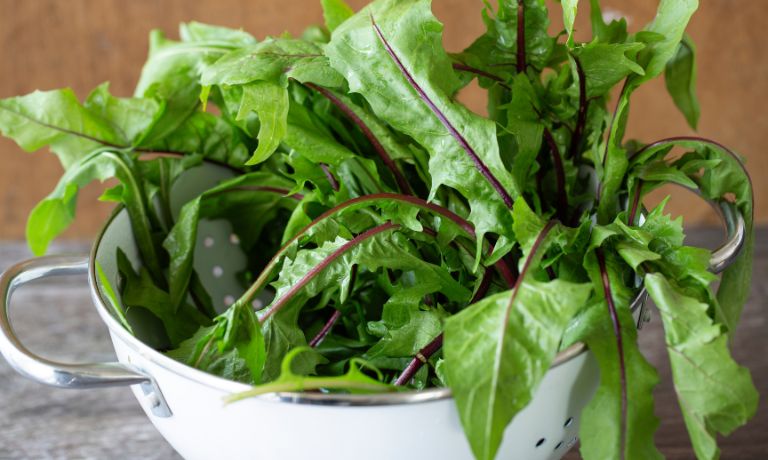
Substitutes For Dandelion Greens
Dandelion greens are an incredibly nutritious and delicious leafy green vegetable.
However, if you’re looking for substitutes for dandelion greens, there are many options:
Arugula
Arugula, also known as rocket or roquette, is a leafy green vegetable native to the Mediterranean region.
It has a spicy, peppery flavor and contains high levels of vitamins A and C.
Arugula can be eaten raw in salads or added to sandwiches and wraps.
It can also be cooked lightly in soups, sautéed with other vegetables, or used as a garnish.
In addition, its mild flavor means it can easily be incorporated into many dishes without overpowering other ingredients.
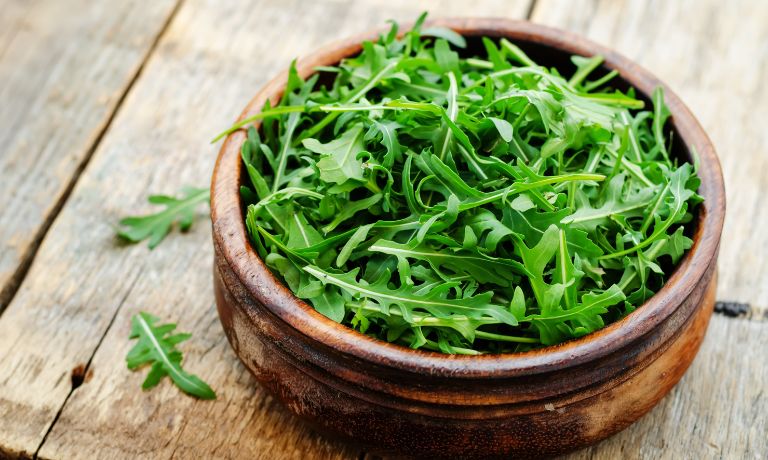
Escarole
You can use Escarole as a substitute for dandelion greens. It is a leafy green vegetable that belongs to the Chicory family.
It has broad, deeply serrated leaves ranging in color from light green to deep, dark green.
It has a slightly bitter taste and is often used as an ingredient in salads or cooked dishes.
Escarole can be eaten raw or cooked; when it’s cooked, it’s usually boiled or blanched. It can also be braised, sautéed, or stir-fried.
When using escarole in recipes, removing any tough or wilted outer leaves is important before preparing.
Escarole is a popular vegetable in Italian and Mediterranean cuisine and is often used as a base for soups, stews, and salads.
It is also a side dish in seafood dishes such as shrimp scampi or fish stew.
Escarole can also be stuffed with ricotta cheese and baked, added to omelets or frittatas, or mixed with other vegetables like onions and garlic for a flavorful side dish.
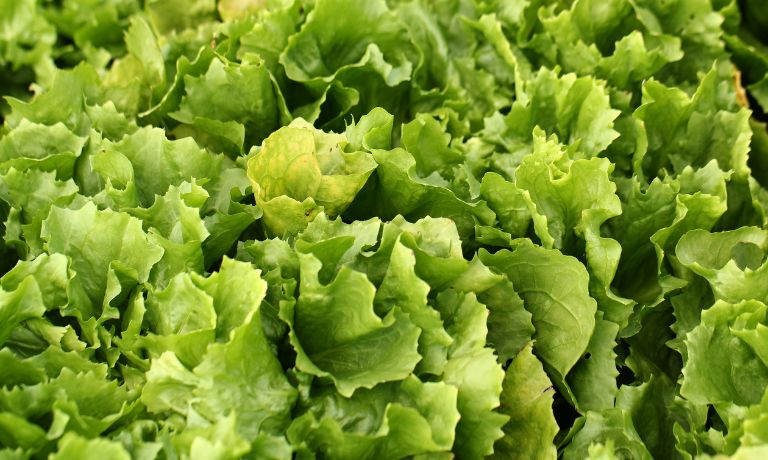
Rapini
Rapini, also known as broccoli rabe, is a bitter green vegetable native to the Mediterranean region.
The flavor of rapini is similar to that of broccoli but more pungent due to its bitterness.
It is similar in appearance to broccoli but with smaller florets and longer stems.
The leaves and shoots of rapini are edible and can be used fresh or cooked.
This popular vegetable is often boiled for a few minutes or steamed before being served.
It can also be stir-fried, sautéed, roasted, or used in soups and stews.
Rapini pairs well with garlic, lemon juice, olive oil, chili flakes, and Parmesan cheese.
Try using it as a side dish or an ingredient in pasta, pizzas, and salads.
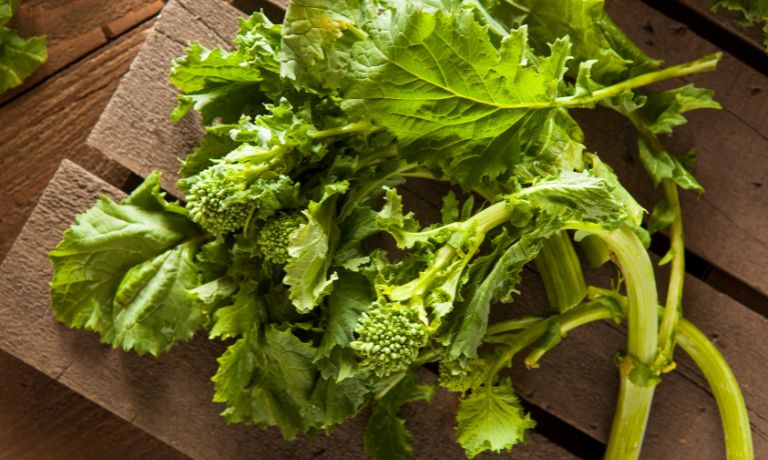
Radicchio
Radicchio is a chicory family member with a bitter flavor and wide, deep red leaves.
The bitterness can be offset with other ingredients such as citrus juices, sweet fruits, nuts, and cheeses.
It is often served raw in salads or lightly cooked to mellow its sharpness.
Radicchio can also be braised, grilled, or roasted to bring out its sweetness.
It is versatile in various dishes, including pizzas, pasta, sandwiches, risotto, and stews.
Radicchio also pairs well with creamy dressings and sauces to add color and flavor to salads.
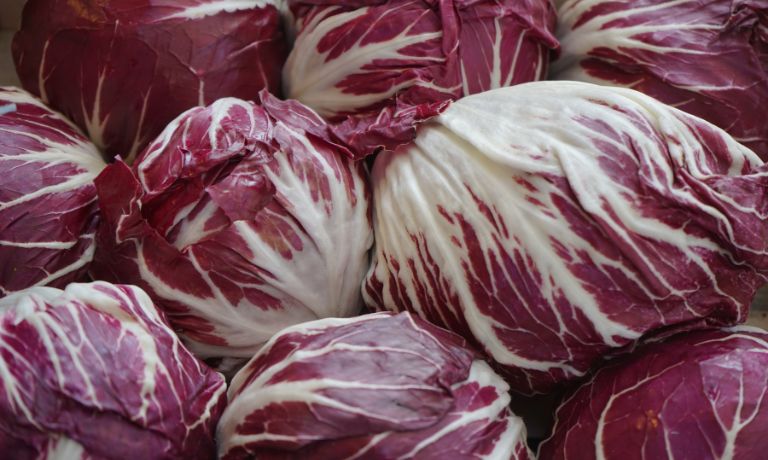
Spinach
Spinach is a leafy green vegetable that originated in Persia and is now grown worldwide.
It has a slightly sweet, delicate flavor and can be eaten raw or cooked.
Spinach is a source of vitamins A, C and K and iron, folate, and magnesium… It is also low in calories but high in fiber.
Spinach is often used in salads, sandwiches, soups, stews and sautéed dishes. It can also be pureed for sauces or added to smoothies.
In addition to being a healthy food option, spinach is an incredibly versatile ingredient that can be used in various ways.
Add it to omelets, lasagna, pasta and stir-fries for a nutrient-packed meal. Spinach is also great in dips and salads.

Watercress
Watercress is a member of the cruciferous vegetable family, related to kale, broccoli, arugula and cabbage.
It has dark green leaves that are slightly bitter.
It can be eaten raw or cooked and is often used for adding flavor to salads, soups, sandwiches and wraps.
Watercress is also great when wilted with butter and garlic or added to stir-fries for a nutrient-packed meal.
It’s also an excellent source of vitamins A, C and K, folate and iron.
Additionally, it provides dietary fiber, potassium and calcium.
Its mild flavor pairs well with other vegetables, proteins such as chicken or fish, and herbs like parsley and lemon juice.
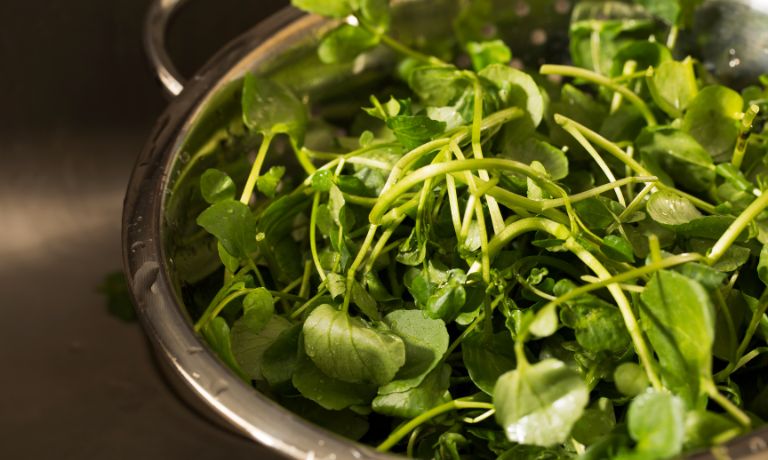
Curly Endive
Curly endive (Cichorium endivia) is a leafy green vegetable from the Chicory family.
It has long, thin and curly leaves with a slightly bitter flavor.
Curly endive can be eaten raw in salads or cooked in various dishes. It can be a substitute for Dandelion greens.
The leaves can accompany other vegetables, be added to soups and stews, or be cooked with meats and poultry.
It also makes a great addition to stir-fries and egg dishes.
It can be found fresh in the produce section of most grocery stores. Some people also grow their curly endive in the garden.
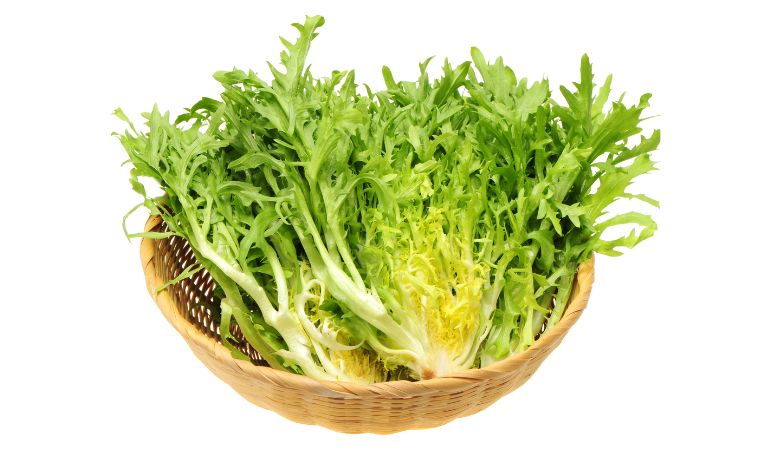
Mustard Greens
Mustard greens are leafy green vegetables from the Brassica family.
They have a distinctive, slightly spicy flavor that makes them popular in many dishes.
Mustard greens can be eaten raw or cooked and are often used in salads, soups, stews, stir-fries, curries and more.
They can also be steamed, boiled or sautéed with other vegetables and spices.
Mustard greens are a great source of vitamins A, C and K, fiber, calcium and iron.

FAQs
Can Mustard Greens Replace Dandelion Greens?
Yes, mustard greens can be used as a replacement for dandelion greens in most recipes.
Mustard greens have a slightly different flavor and texture than dandelion greens but are still quite similar.
Can Spinach Replace Dandelion Greens?
Yes, spinach can replace dandelion greens in recipes.
It has a milder flavor and is much easier to find in stores. Spinach also contains vitamins A and C.
Can Kale Replace Dandelion Greens?
Yes, kale can be used as a replacement for dandelion greens in many recipes.
Kale has a mild flavor and is versatile, making it a good substitution for dandelion greens.
Conclusion
There are many options when trying to find a substitute for dandelion greens.
Arugula, escarole, rapini, radicchio, spinach, watercress, mustard greens and curly endive are great substitutes that provide similar nutrition and unique flavors and textures.
With so many options, there is sure to be something to fit everyone’s tastes.
Whichever you choose, you can rest assured knowing that you are making a healthy and delicious choice.
So don’t be afraid to get creative with your next dish – there’s no wrong way to enjoy dandelion greens!

